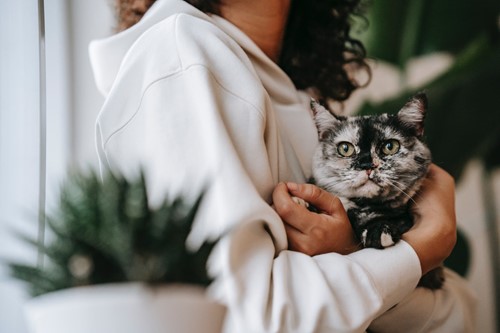
Indoor plants have many benefits for humans, but can be dangerous for pets. Some of the most popular house plants can be toxic to cats and dogs. Keeping your pets healthy and safe is important, but it’s disappointing when your ideal houseplant won’t work in your home. Luckily, there are some comparable options for many of the most popular plants to have indoors. Here are the details about monstera, aloe vera and their pet-safe alternatives.
Monstera Alternatives
Monstera are tropical broad-leaf plants that can grow as high as ten feet tall when grown indoors. They’re also called “Swiss cheese plants” because of their iconic split leaves. Monstera are very popular with interior designers as a bold statement plant in homes and commercial spaces. Unfortunately, the leaves are toxic to dogs and cats. Monstera are not deadly but can cause vomiting, upset stomach and mouth irritation if eaten.
If you want a large statement-making plant, you still have options that are non-toxic to pets. The banana tree, while most commonly grown outdoors, can make a great indoor plant for those who like large bold leaves. They are native to tropical climates and thrive in warm temperatures and high humidity, which can actually make them a great indoor plant choice if you live in colder climates.
Another excellent alternative that won’t harm your pets is the Areca palm. This is another tropical plant you are likely to encounter planted outdoors as barriers or privacy screening because of their height and similarity in appearance to bamboo clusters. Areca palms need lots of light, so if you don’t have a bright window, it’s a good idea to bring the palm outside during the summer months.
Aloe Alternatives
Aloe vera plants are popular houseplants because of their ability to grow in small containers with little attention. They’re also useful plants: aloe vera gel is widely used in cosmetic and medicinal products all over the world. They are heavily cultivated and therefore easy and inexpensive to find. Despite its many benefits and uses for humans, aloe vera is toxic enough to pets that you should keep it far away from them. Often it’s simply enough to keep an aloe plant out of reach, but if you’re looking for alternatives, there are options.
One aloe alternative is the haworthia succulent. While it looks extremely similar to aloe plants, it’s non-toxic to pets if ingested. They’re also similarly easy to take care of and only require watering once a week at most. Any variety of haworthia succulent is an excellent alternative to aloe, especially for homeowners with limited space or time for maintenance.
The fleshy, pointy leaves of the bromeliad family of plants are comparable to aloe both in aesthetics and care. While bromeliads can grow large and produce bold, bright flowers, some of them don’t even require planting in soil to grow. Epiphytic bromeliads, also called Tillandsia or air plants, grow attached to rocks and trees in nature and simply absorb moisture and nutrients through the air. You can do the same with an indoor bromeliad as long as it has something to hold on to. Just soak your plant in water for an hour once a week to make sure it gets the moisture it needs.
About the Author

